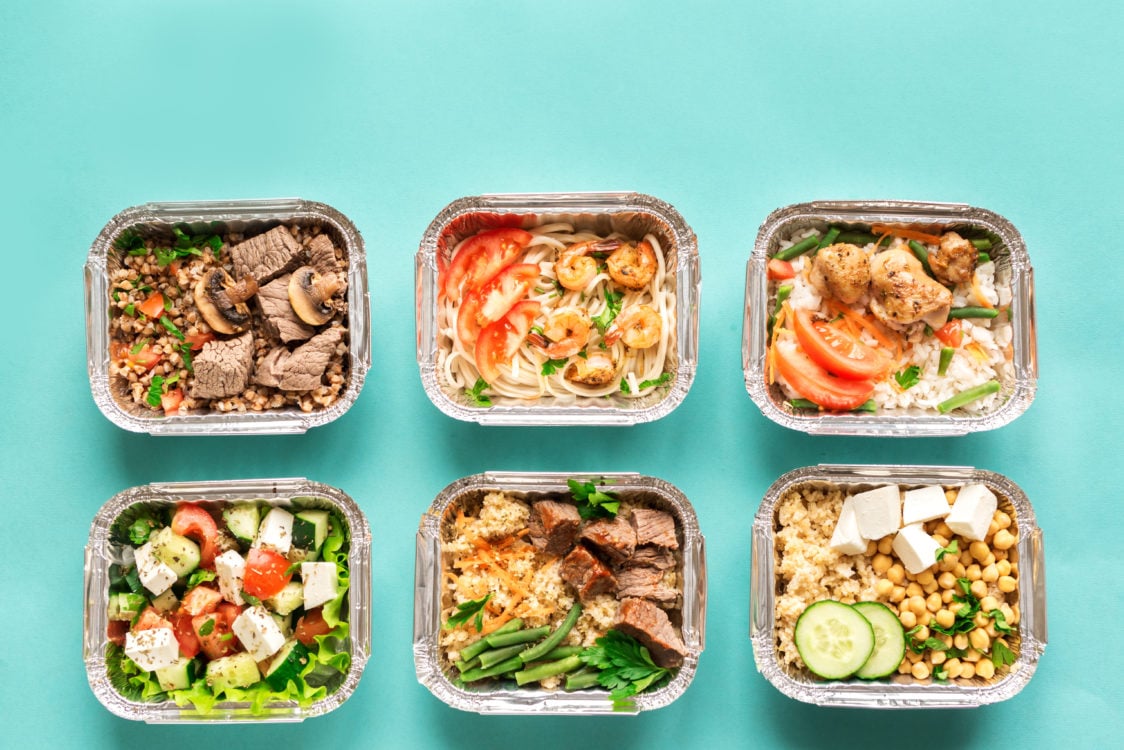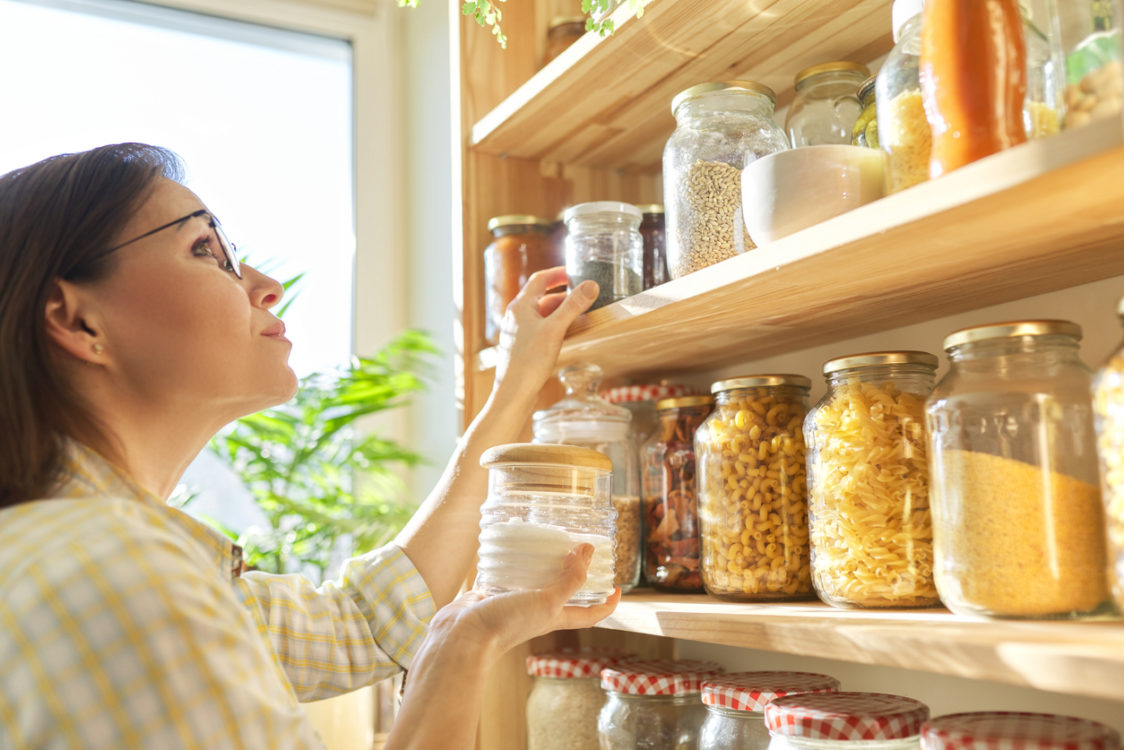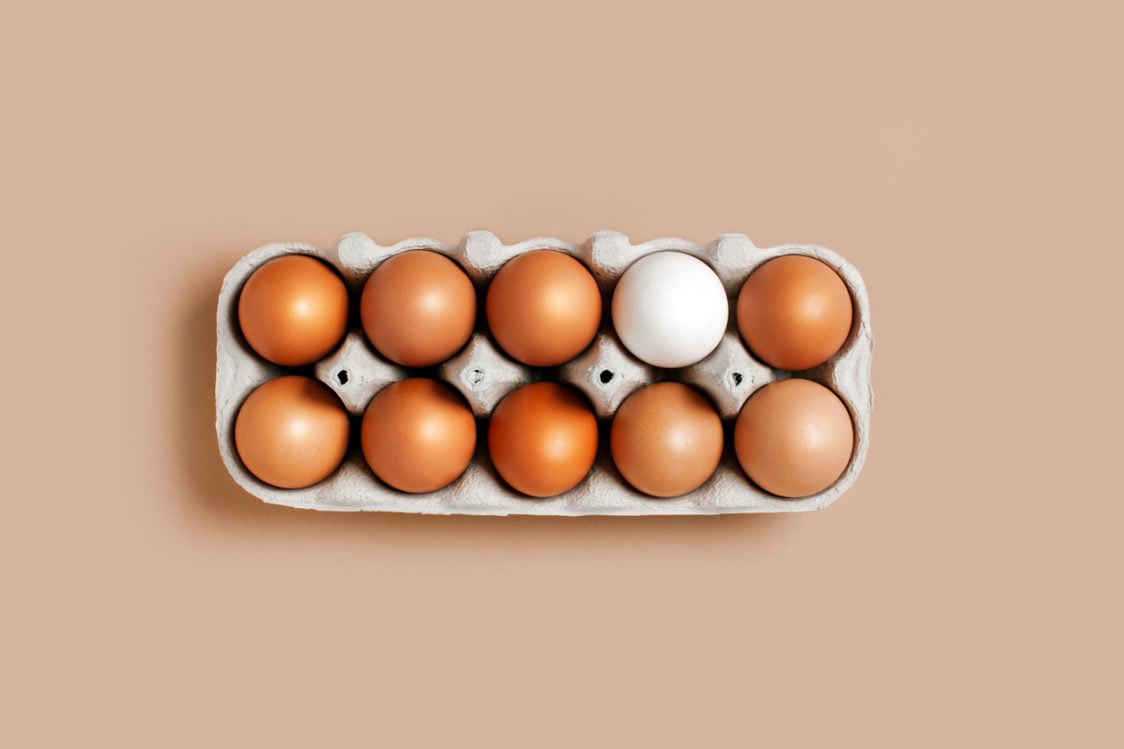Table of Contents
How many times have you and your wallet cried over unnecessary food waste? Like when you discovered a withered, sad-looking salad or some coriander, a forgotten yogurt that almost left the fridge on its own, or flour that pests have breathed new life into? Sometimes forgetfulness is behind the unnecessary throwing away of food, sometimes a miscalculated guess when shopping, but it is often also due to inappropriate storage, which shortens the “lifespan” of food.
You may not even know that you are doing something wrong when storing food, and maybe you are still storing tomatoes in the fridge. We will also touch on this issue and introduce you to a simple guide to suitable food storage so that your food stays in good condition for as long as possible. Thus, you will never have to throw away those expensive blueberries with mould. As a result, you will save a lot of money, extend their lifespan and maintain great taste, nutritional value and also the health of your food.
Wasteful throwing away of food is a global problem. According to surveys, people think they’re throwing away far less food into their rubbish bins than they actually are. Worldwide, roughly 1/3 of the food produced will not be used in the kitchen. This amount would feed about 3 billion people. The average European throws away between 96 to 115 kg of food each year. The consequences of such food waste have an impact on increased water, energy and greenhouse gas production, which is not good for the planet. When you learn to store food properly, you will do something not only for yourself, but also for the environment. [1-2]
The 6 most important principles in food storage
Before you unpack your grocery bag at home and pack away your groceries to the appropriate places, go back and plan your shopping purchases. Nowadays, there is no need to build up a huge supply of food. Especially for fresh ones like yogurt, cheese or meat, consider not only the size of your fridge, but also your stomach.
If you are interested in making the right choices and buying groceries, read our article 7 Tips on How to Make the Right Food Choices and Purchase Groceries. In case you want to buy as cheaply and healthily as possible, our article 12 Tips on Budget Friendly Buying and Preparing of Meals will help you too.

1.Store food as indicated on the packaging
If you are not sure where particular food belongs, look for the answer on the packaging. The method of storage is information that manufacturers are required to provide. With unpackaged foods (fresh fruits, vegetables…) you will have to manage this yourself, which you can easily do after reading our article.
2.Take note of the expiration date.
One of the causes of unnecessary food waste is that a lot of people do not know the difference between the terms “use by” and the date of minimum shelf life. So, there’s food thrown away that could still be used. The term “use by” is commonly found on fresh products such as meat or dairy products. On the contrary, long – life foods such as rice, flour or granola boast a date of their minimum shelf life. For these foods, they can be consumed after this date, only it is necessary to check their condition (damaged packaging, pest infestation, appearance and smell). If you find rice with a few months over the minimum expiry date whilst cleaning the pantry and there are no pests hidden inside, you can safely consume it. On the contrary, if moths have marked their territory in your rice, it is probably not a good idea to eat, and you can throw it away or compost it. [3]
3. Place foods in your pantry according to their shelf life
If you’re already well versed in your food expiration dates, organize them accordingly. For those foods which are already flashing an imaginary red light with the expiration date approaching, make room in front and keep an eye on them, and you’ll know they’ll soon become items on your menu. Foods with a longer shelf life can wait for their opportunity more in the back.
This way you will have a better overview, and you will not eat the newly purchased cheese and in a few days you will find that you could have calmly eaten the cheese from your last purchase, which already seems to have the best behind it, and thus you have to throw it away.
4. Separate fresh and processed foods
This is especially true in the fridge, where you should have your prepared containers of cooked food and fresh products stored separately, from which you will make a complex meal later. The place for unprocessed fresh food should be at the bottom of the refrigerator, so that, for example, it does not happen that the juice of raw meat begins to drip from top to bottom on other food. This will prevent the risk of cross-contamination. By putting the items in the fridge away from each other, you prevent various unwanted pests from jumping from one food to another, so as not to turn your fridge into a mess. [4]

5. Be especially careful with high-risk foods
In general, high-risk foods include those containing a high proportion of protein. For example, meat, meat products, fish, seafood, dairy products and eggs. These should be kept at low temperatures below 5 °C. Another risk group is the popular mayonnaise, dressings and other fat-rich snacks, which have a short ‘life’ and should also be stored at lower temperatures. You should not leave these foods in a warm environment for long periods of time, and if you do not eat the whole package, then put it right back in the fridge. [5]
6. Store pre-prepared meals in sealable containers, but consume them as soon as possible
If you are one of those who do not want to leave anything to chance and carefully prepare individual meals in advance, be careful that your pre-prepared food is stored in well-closed containers. Airtight seal containers and jars are ideal for these purposes. However, already cooked food will not last forever in them, and if you already know in advance that you have gone a little too far with the “meal prep”, put some boxes from the fridge in the freezer, where they will last longer fresh. If you want to learn more about effective food preparation for a few days in advance, read our article How to Prepare Meals and Pack Effectively.

8 known food groups and their appropriate storage
Who has time to “wonder” where what belongs, when all you want to do when you’re back from a gruelling shopping trip is stuff everything into the fridge, grab the cookies you bought, and put your feet up. You don’t have to worry, proper kitchen and pantry organization is not difficult and over time you will do it automatically. In addition, a proper kitchen arrangement can also play a role in weight loss, which you can see for yourself in our article 10 Tips on How to Organise a Kitchen for Successful Weight Loss.
You do not need to be the owner of a large cellar or a huge pantry to store food properly. A refrigerator (5 °C) and a small pantry, where the temperature is slightly lower than the room temperature, will suffice.
You might be interested in these products:
1. How to preserve oatmeal, rice, lentils and other cereals or legumes?
The group of long life foods includes flour, rice, pasta, quinoa, oatmeal, instant porridge and other cereals, legumes or spices. When you leave these products in their original packaging, it often happens that after a while uninvited guests move in the form of moths or other beetles, for which your spelt flour becomes a hospitable home. You can easily avoid this well-known error if you pour the purchased product into an airtight container that these “enemies” cannot get into. [6]
2. Not all oils, nuts and seeds belong on the kitchen shelf
The same rules do not apply to all fat rich foods such as oils, nuts, nut butter and seeds. Generally, their enemies include oxygen, light and heat (approximately above 20 °C). First of all, check the manufacturer’s instructions. Olive, rapeseed or sunflower oils, for example, like a dark environment with no sunlight, but they do not strictly require storage in the refrigerator. If you buy, say, flaxseed oil or other seed or walnut oil, they will appreciate the cold from the refrigerator as are more susceptible to rancidity.
Keeping foods in a dark place in a closed container also suits most nut butters, for which even a cooler pantry is not a bad thing. On the other hand, some nuts, such as walnuts or seeds (linseed, hemp, poppy seeds), especially in their ground variety, belong in the fridge or freezer. These popular sources of fat for your breakfast porridge are very susceptible to rancidity, which causes a sour taste, and you certainly don’t want to spoil your morning moment for breakfast. [7]

3. You don’t have to put vinegar, dressings and other seasonings in the fridge immediately after purchasing them
I’m sure you have a lot of flavourings at home that you use in your culinary delights. It is various vinegars, balsamic, soy or teriyaki sauces that mostly tolerate the dark spaces of your pantry. But even with these ingredients, read the manufacturer’s instructions, some recommend storing them in the refrigerator after opening. Other popular condiments, such as mustard, ketchup or other dressings, should be kept cool when opened. Long life foods also include canned goods, preserves or jams, which you can store in the pantry for a long time, but after opening they also belong in the fridge, as they are a very in demand environment for various moulds that like heat. [8-9]
The pantry environment, where the sun’s rays do not shine, will also appreciate your favourite proteins, sweeteners, sweets, protein bars, canned fish, dried fruits and vegetables, as well as coffee, tea, stimulating drinks, etc.
4. Do all fresh fruits, vegetables, potatoes or mushrooms really belong in the fridge?
Having a good supply of fresh fruit and vegetables is one of the basics of healthy eating. But a lot of people don’t worry too much about storing these foods properly, so everything ends up in the fridge. Not for all fruits and vegetables require a cold fridge, especially to maintain their taste. Inappropriate storage is not the only error in the handling of these raw materials.

If you are used to washing fruits and vegetables with water immediately after unpacking your shopping, to save time in the future, this is not the best idea. The increased humidity promotes the multiplication of microorganisms, and it may happen that the expensive strawberries you have just bought will not even last until the next day, and instead they will end up in the bin. So, the rule applies – fruits, vegetables, potatoes and mushrooms must be washed just prior to consumption.
Examples of suitable food storage:
In the fridge belongs:
- berries: e.g. blueberries, raspberries, blackberries, grapes
- salads: e.g. rucola, field lettuce, baby spinach, iceberg lettuce, salad mixes, pre-cut vegetables
- fresh mushrooms stored in a paper bag for better preservation
The cold pantry includes:
- potatoes
- garlic, onion, shallots, leek
- root vegetables (carrots, celery, parsley)
- broccoli, cabbage, cauliflower
At room temperature belongs:
- tomatoes, avocados, peaches, nectarines, pears, apples, citrus fruits, bananas, melon, pineapple
- peppers, pumpkins, sweet potatoes, eggplant, zucchini, ginger [10-11]
5. What to look out for when storing meat, fish and meat products?
You should keep the fresh meat and fish in the container you bought them in, or move them to a well-sealed container and place them on the bottom of your refrigerator, where the temperature is lower. Fresh meat should not come into contact with other foods to avoid unwanted contamination. If you do not plan to use the meat you have just purchased for the next few days, put it in the freezer, where you have peace of mind that it will keep fresh.
- Purchased minced meat lasts about 24 hours in the fridge,
- fish, poultry and beef 2-3 days,
- pork approximately 5 days.
Of course, it also depends on the use by date from the manufacturer. In the freezer, these high-quality protein sources will last easily for 6-12 months. Once thawed, do not freeze them again. [12]
Keep ham and other sausages carefully stored in the fridge. In the case of freshly sliced ham or salami from the butcher, it should be used within two days. For packaged sausages, keep an eye on the date by which the product should be consumed. Sausages are high-risk foods for possible contamination, so always check their colour and surface, which should not be sticky, before eating. [13]
6. What storage conditions are suitable for dairy products?
Milk and dairy products like a stable low temperature. They should own the back of the middle or bottom shelf in the fridge.
- Is it standard for you to put open milk in the refrigerator door? You may be surprised that this is a common mistake. As has already been said, milk needs a stable low temperature, and the constant opening of the refrigerator door does not maintain a stable temperature.
- Hard cheese should be stored well wrapped in waxed paper or food foil after opening.
- Yoghurts, cottage cheese and fresh cheeses should be consumed within two days of opening and stored in the fridge carefully sealed.
- You can leave the long – life cream at room temperature (up to 24 °C), but keep it in the fridge when opened.
All dairy products are an enticing home for various pathogens, so be sure to always check them (smell, appearance) before consuming them. [14]
7. What about eggs, do you know how to store them properly?
Remove the eggs from the cardboard and put them nicely in the refrigerator door, where storage trays are prepared for them. That’s the right thing to do, isn’t it? As with milk, eggs like a cool and, above all, temperature-stable environment, which again does not allow them this when in the refrigerator door. So, the next time you come back from shopping, leave the eggs in cardboard, which also protects them from external factors (e.g. odours that easily absorb into eggs), and store them on the shelf in the fridge. [15]

8. How to store baked goods to keep them fresh and crispy for as long as possible?
Confess, which one of you keeps bread or other pastries in a plastic bag at home? This is one of the common mistakes in storing them, as it steams easily and becomes a breeding ground for mould growth. A more suitable option is a paper bag in which air flow is at least a little bit possible. But if you want your baked goods to retain their crunchiness on the surface and suppleness inside for as long as possible, wrap it in a towel and store it in a so-called breadbox – a small wooden box or other container in which ventilation is provided.
This way, the baked goods will keep fresh for a week. Sourdough products generally retain their freshness for longer periods than yeast products. Baked products generally enjoy room temperature. And if you can’t use it, you can freeze them and enjoy them later. [16]
Examples of proper food storage:
Where to store food? | Food types |
|---|---|
| Pantry | cereals and pseudo-cereals (rice, flakes, buckwheat, quinoa, bulgur, couscous, flour…), legumes, spices – all in sealable packaging oils (vegetable), vinegar, seasonings (soy sauce, dressings, ketchup, jams…), canned goods, pickled vegetables, preserves protein and protein bars, sweets, chocolate, dried fruits, sweeteners, tea, coffee, canned beverages, potatoes, garlic, onions, shallots, root vegetables (carrots, celery, parsley), broccoli, cabbage, cauliflower |
| Refrigerator | oils (of nuts or seeds), walnuts, poppy seeds, seeds (linseed, hemp), open seasonings (soy sauce, dressings, ketchup, jam, etc.), open cans, pickled vegetables, preserves, berries, salads, fresh mushrooms, fresh meat and fish, meat products, eggs, dairy products |
| Room temperature | pastries, tomatoes, avocado, peaches, nectarines, pears, apples, plums, citrus fruits, bananas, kiwi, mango, persimmon, melon, pineapple, peppers, pumpkin, sweet potatoes, eggplant, zucchini, ginger, fresh herbs in a vase (glass) with water, unopened long – life cream |
More practical tips on food storage
- Avocados are popular a delicacy, but what do you do when you come across a perfectly ripe piece and don’t want to use it all? Leave the stone in the other half, drizzle the surface with lemon or lime juice and put it in the fridge. For the same reason citrus juice is added to guacamole to prevent oxidation – unwanted browning of the avocado.
- Bananas and apples produce more ethylene and should be separated from other fruits and vegetables. But there are cases where you can use this property, for example, when you need other fruits such as avocado or mango to ripen – put them together with bananas or apples in a plastic bag, and you will speed up the process significantly.
- Cut vegetables such as carrots, celery or radishes for a longer shelf life into smaller pieces, put them in a container of water and put them in the refrigerator. This will keep them beautifully crispy for a long time.
- Wash the lettuce, dry it properly and wrap it in a paper towel – this will absorb moisture in the fridge, leaving the salad fresh for longer.
- Freshly cut herbs don’t last very long, but if you put them in a glass of water and leave them calmly on the kitchen counter, you will extend their lifespan, plus they will smell nice and decorate your kitchen. You can also turn the herbs into pesto by mixing with oil or lightly blanch them (briefly soaking them in boiling water) and then freeze in a small amount of water in an ice container. [17-18]
What should you remember?
After reading the article, you already know that tomatoes, apples or zucchini do not belong in the fridge, milk and eggs should never be placed in the refrigerator door again and the baked goods should no longer be put in a plastic bag. Thanks to tips on proper food storage, you no longer have to throw away forgotten about or expired food or pest-infested flour. It’s nice to have a well-organized kitchen, it’ll save you not only money, but you’ll also have a better overview of what you have at home.
Do you know and use all the tips from today’s article in practice? Have you made any mistakes? Show off what kind of “hacks” you use in your household to store food. If you liked the article, share it with your friends, who will also appreciate these home tips.
[1] Zachraň jídlo. Kolik se plýtvá. – https://zachranjidlo.cz/kolik-se-plytva/
[2] Food and Agriculture Organization of the United Nations. Food loss and waste and the linkage to global ecosystems. – http://www.fao.org/3/i7597e/i7597e.pdf
[3] Datum minimální trvanlivosti a datum použitelnosti. Česká zemědělská a potravinářská inspekce. – https://www.szpi.gov.cz/clanek/datum-minimalni-trvanlivosti-a-datum-pouzitelnosti.aspx
[4] Bezpečnost potravin. Lednička. – https://www.bezpecnostpotravin.cz/az/termin/76781.aspx
[5] Australian Institute of Food Safety. How to Store Food Safely. – https://www.foodsafety.com.au/blog/how-to-store-food-safely
[6] Openfit. 12 Food Storage Tips to Make Your Groceries Last Longer. – https://www.openfit.com/food-storage-tips
[7] Food52. How to Store Nuts and Seeds—Kitchen Confidence. – https://food52.com/blog/11275-how-to-store-nuts-and-seeds
[8] Real Simple. How to Store Oil, Vinegar, and Condiments. – https://www.realsimple.com/food-recipes/shopping-storing/food/how-to-store-vinegar
[9] Fustini’s Oils. Get Organized: How to Best Store Your Favorite Speciality Ingredients | and Vinegars.– https://www.fustinis.com/blog/get-organized-how-to-best-store-your-favorite-speciality-ingredients/
[10] Healthline. Storing Fruits and Vegetables. – https://www.healthline.com/health/food-safety-fruits-vegetables
[11] The Spruce Eats. Here’s How to Keep Mushrooms From Going bad. – https://www.thespruceeats.com/how-to-store-mushrooms-1389342
[12] Cookist. How to preserve fresh meat: Rules and tips to make it last long. – https://www.cookist.com/how-to-preserve-fresh-meat-rules-and-tips-to-make-it-last-long/
[13] 13. NZ Pork . Storing Ham & Pork. – https://www.pork.co.nz/cooking-methods/storing-ham-pork
[14] Jeunesse, M. 18 ways you’re storing groceries wrong that are cutting down their shelf life. – https://www.insider.com/how-to-store-food-so-it-lasts-longer-2018-9
[15] Eatright. Keep Your Dairy and Egg Products Safe.https://www.eatright.org/homefoodsafety/safety-tips/food/keep-your-dairy-and-egg-products-safe
[16] Bezpečnost potravin A-Z.Uchovávání chleba v domácnostech. – https://www.bezpecnostpotravin.cz/az/termin/76507.aspx
[17] Loewentheil, H. 17 Smart Food-Storage Tips For Avoiding Waste And Saving Money. – https://www.buzzfeed.com/hannahloewentheil/food-storage-tips
[18] Real Simple. The Ultimate Guide to Storing Every Type of Food in the Refrigerator for Long-Lasting Freshness. – https://www.realsimple.com/food-recipes/shopping-storing/food/store-food-refrigerator


Add a comment